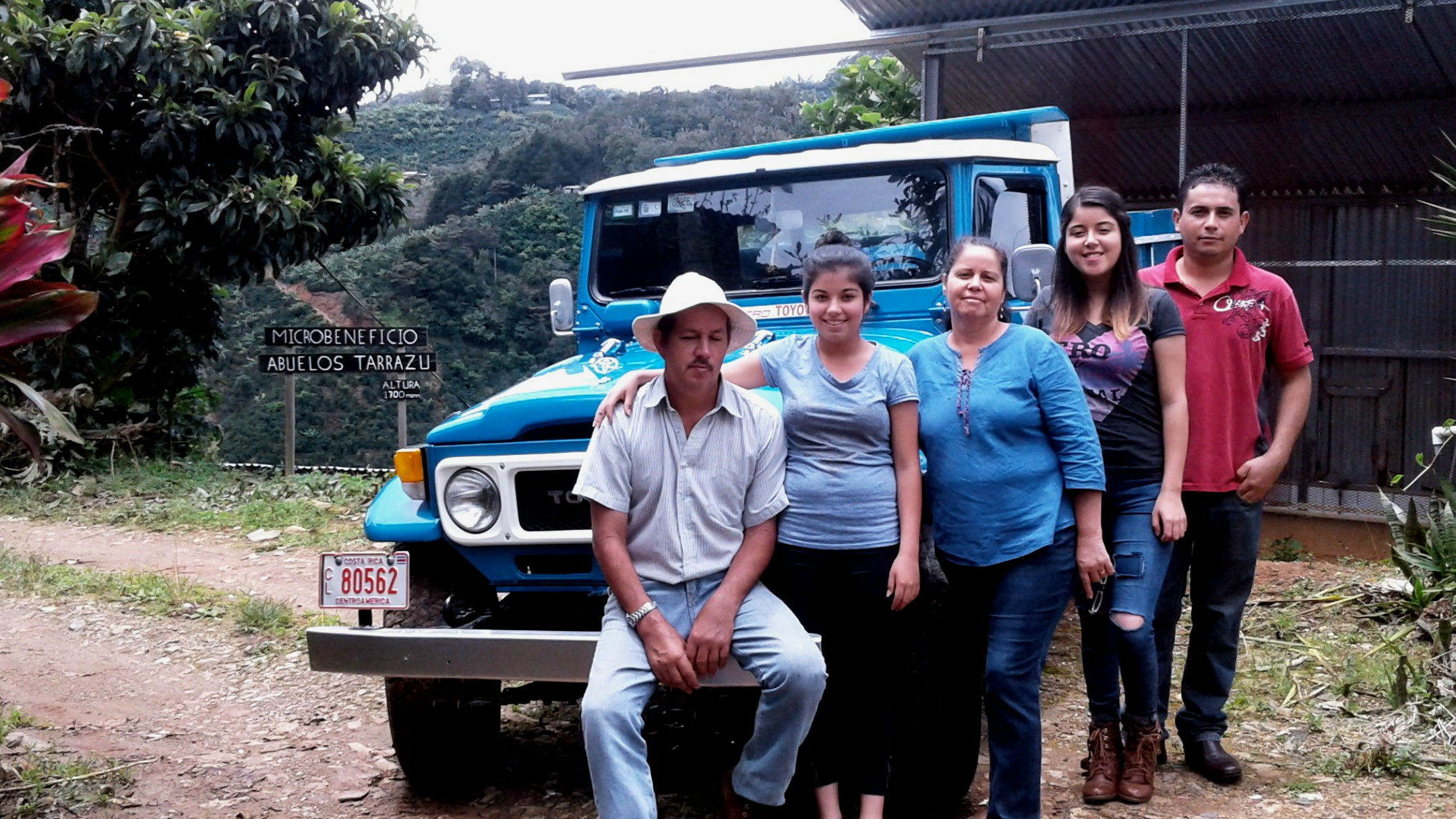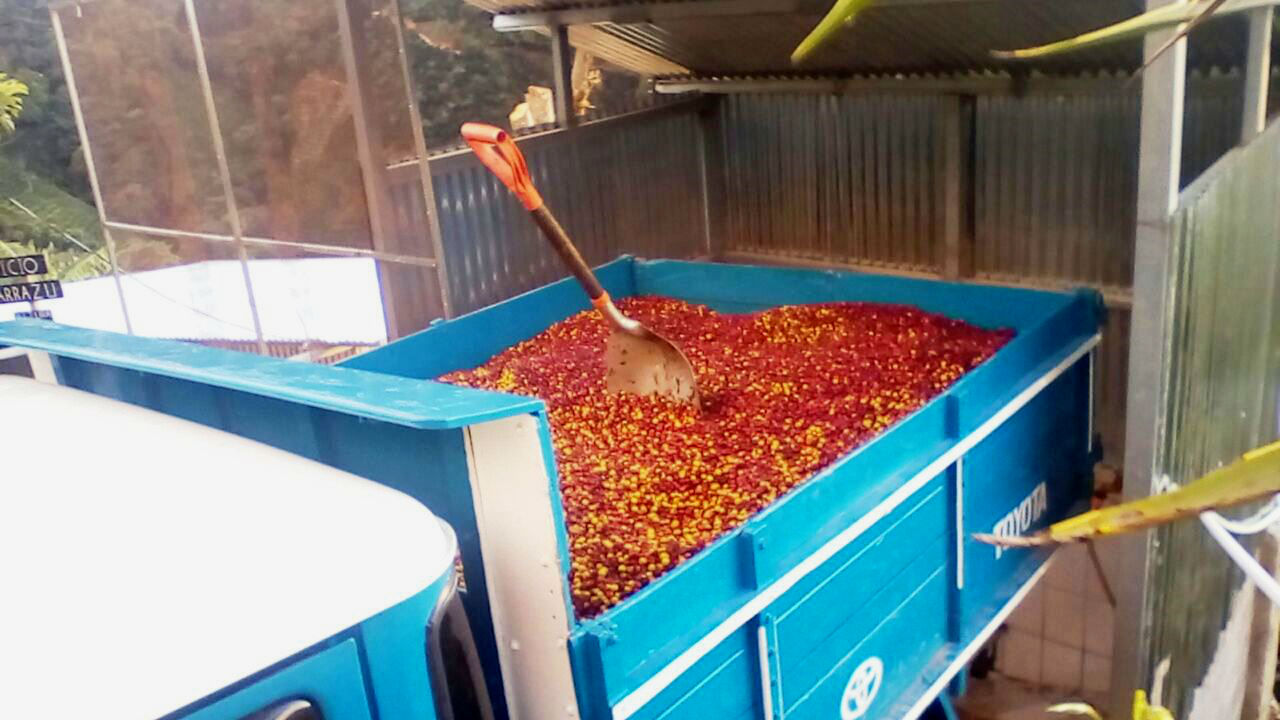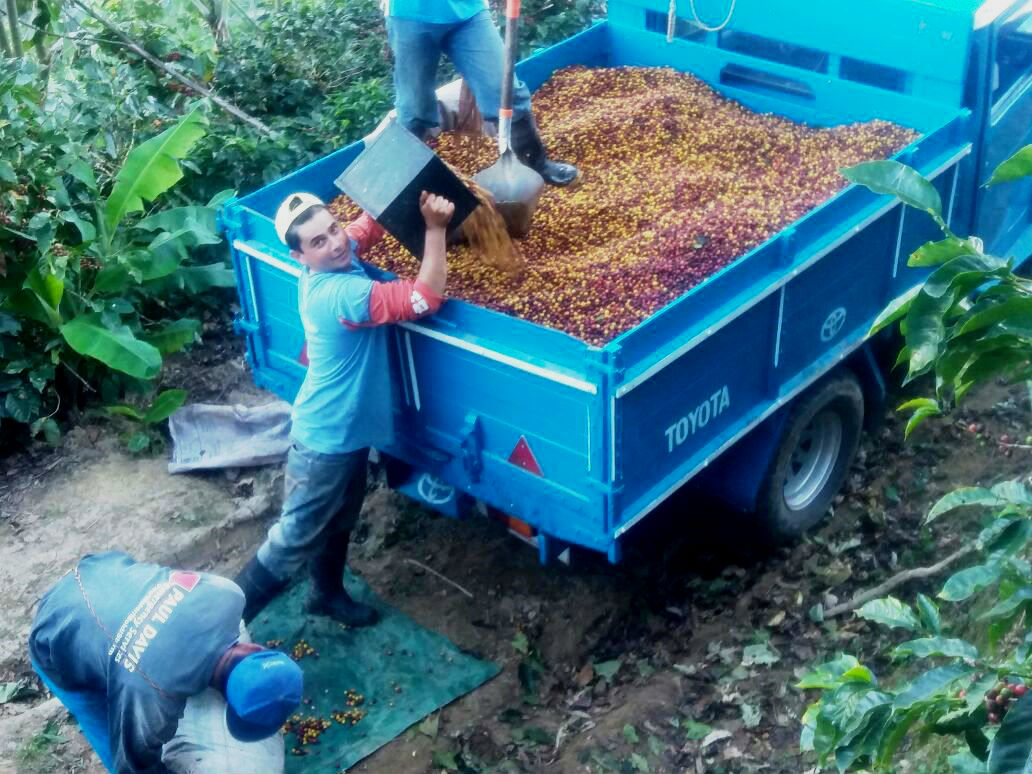Costa Rica La Esperanza de Tarrazu Familia Monge Black Honey Crown Jewel
Boxes 0
Warehouses Oakland
Out of stock
intro
Fun stuff here, this black honey process coffee is juicy and ripe with load of notes ranging from concord grape and raisin to molasses and cinnamon.
Rather than fermenting and washing the coffee after pulping, honey processed (sometimes called pulped natural or less frequently semi-washed) coffees like this one are left to dry with a bit of the sticky fruit still intact. Color designations tend to indicate the amount of fruit left: white honeys have nearly none at all, while red honeys are the “classic” style and black honeys, such as this example, are left to dry with as much fruit as possible. The seeds are left with a little reddish hue still clinging to the silver skin and a lot of bold, fruity flavors.
Sourced from La Esperanza de Tarrazu, this coffee was grown and processed by the Monge family, primarily overseen by Rodolfo and his son Gustavo. With over 40 years of growing experience under their belts, the team decided to begin processing their own coffee only recently, within the last four years or so. The farm is just 5 hectares, yet the Monge family have diversified their crops including lemon, orange, mango, guava, plantain, and banana.
This is the second year we’ve featured the black honey from Familia Monge as a Crown Jewel, and we’re thrilled to bring it back to the menu again this season.
green
Remarkable density here and very stable looking moisture figures should keep this black honey coffee tasting fresh and fruity for months to come. The size grading is pretty standard for Central American coffees, mostly 16-18 with a few outliers. Looking good by all available physical metrics.
Gustavo and Rodolfo are growing a very classic mix of Caturra and Catuaí, two old standard-bearers and legacy cultivars which emerged first in Brazil in the 20th century. Caturra is a dwarf Bourbon mutation, first reported along the border of Minas Gerais and Espírito Santo in 1937. Its short stature allows for dense planting and has become a coveted trait in many hybrids, including Catuaí. Catuaí is also of Brazilian origins, the child of a Yellow Caturra crossed with Mundo Novo (a spontaneous Bourbon-Typica hybrid). Its hybrid vigor results in higher yields than its parents.
taste
ikawa
We’ve updated our V2 Ikawa Pro machines with the latest Firmware version (24) and run on “closed loop” setting. Our roasters underwent full service in October of 2018 which included replacement heating elements and an updated PT 1000 temperature sensor.
It’s been a bit since I’ve tried a fresh take on my airflow profile, and I figured this black honey coffee was as good a place to start as any. I was pretty sure my tried-and-true profile for East African washed coffees wouldn’t really do justice here.
I kept a few elements similar: high airflow out of the gate at the turnaround, and a gradual descent during Maillard reactions only to peak a second time at first crack. I sloped down the curve during coloring and tried to avoid coasting completely during development, and added a few degrees to the end temperature. My first roast was a bit dark, so I tried again, and actually manually stopped this roast about 30 seconds before its designed end time. The coffee was expressive and true to character at this roast level, and closely matched other samples on the same table in terms of roast color; a good first look at the coffee’s potential.
You can download the profile to your Ikawa Pro app here:
Roast 1: RC ck 6.5m afmod 6.2019 2nd
probatino
One of the most rewarding aspects of the Crown Jewel program is the ability to experiment with so many different coffees. With a small-scale buyers’ offering, I’m not beholden to consider purchasing more than I need, and then scramble to find a way to ‘use up’ a coffee more quickly than I’d like, in order to fulfil orders. In addition, with so many different, exceptional and diverse coffees that get sent my way for analysis, it’s a boon to play not just with different origins, but also different, unusual/new or experimental processing methods.
Honey processed coffees (so named because the word ‘miel’ in Spanish can refer to mucilage), are predominantly found in Costa Rica and Brazil, and offer a huge diversity of profiles. These profiles have a few different names – white, red, and black for example – and are achieved by many different variables, but usually refer to the how much mucilage (or pulp) the producer has decided to leave on the beans in order to affect the final cup profile. The challenge with producing honey-processed coffees is not trivial; considerations must be made regarding weather conditions, initial moisture levels of the ripe cherries, the fact that the beans are so sticky/tacky that mechanical drying is difficult to achieve evenly, etc – no really, I could go on! Also, a serious consideration is that one of the main risks is that mucilage and coffee beans themselves are hygroscopic, so off-flavors are more likely to occur without proper and considered production management.
Luckily, none of these challenges went unmet by the decades of experience the Monge family have under their belts, and so landed the crowd-pleasing L’Esperanza de Tarrazu on my desk last week.
I knew that I wanted to experience this coffee at the best profile for a filter extraction, as I’ve had coffees from the Tarrazu growing region of Costa Rica before, but only as espresso offerings, and have never roasted one myself. So, using my trusty but soon-to-be-modified (blog post coming!) Crown Jewel analysis reference curve, and having cupped Chris’s Ikawa roast and loving what I tasted, I decided to try to mimic his roast stage ratios.
Wanting to spend relatively less time in stage one, I dropped the coffee in at 370 degrees F at a high gas level of 3. For a dense, medium to larger screen-sized coffee, the L’Esperanza drank in initial heat and dried quickly. It proceeded through to the Maillard stage within around 2 minutes. At this point, wanting to draw out stage 2, I lowered the gas by half a point and managed a respectable 48% Maillard phase ratio. I also wanted to preserve the acidity and fruit notes that were clearly inherent in the flavor profile of the coffee, as well as develop this sugary sweetness, I lowered the gas again immediately upon hearing first crack. The crack itself was audible, but the rolling crack was subtle and happened sooner than I expected after the initial pops coming from the drum.
The result in the cup was smooth and complex cup. Fragrant berries and sweet nut notes that emanated from the grounds translated in the cup to fresh berries, walnut, raisin, brown sugar and cocoa with a surprising chrysanthemum floral top note. The soft acidity of mandarine orange walked hand in hand with the mellow acidity of dried cranberries and the fresh sparkle of Lime. I could definitely see myself making a pot of this to leisurely enjoy at anytime of day!





